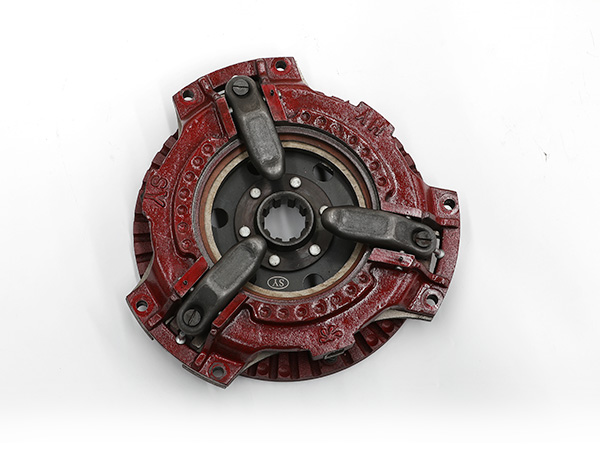The tractor clutch is through the operating mechanism, relying on the friction between the main and driven components, to temporarily separate or gradually connect the engine and the transmission to transmit power, facilitate shifting, ensure a smooth start of the tractor, and prevent damage to parts caused by overloading. During the use of the tractor, many drivers cannot use and maintain the clutch properly, and do not realize the importance of correct adjustment of the clutch. Often due to improper adjustment of the use and operation, the early wear of the clutch and the damage of the transmission parts are caused, which reduces the service life. In order to reduce the failure of the clutch and prolong its service life, it must be used and adjusted correctly.
Correct use and maintenance
(1) When using the clutch, do it quickly and completely when disengaging, and slowly release the pedal when engaging. When the tractor starts, release the pedals quickly. Obstacles and rough terrain cannot be overcome by slamming the clutch pedal.
(2) The time for stepping on the clutch pedal to separate should not be too long, generally not more than 15 to 20 s. If you need to stop for a long time, the gear lever should be in the neutral position and the pedal should be released.
(3) Do not habitually press your feet on the pedals. When driving, do not step on the clutch pedal at all times except for starting, shifting and braking at low speeds. Otherwise, the clutch is often engaged, disengaged or semi-slipped, which will accelerate the wear of the clutch friction plate and pressure plate.
(4) Try to avoid starting with a heavy load. When the tractor starts with a heavy load, the clutch is prone to serious slippage, which generates frictional heat and burns, cracks, warps and deforms the pressure plate and driven plate of the clutch, and the compression spring is annealed. The asbestos friction plate is generally within the working temperature of 400 ℃, and the friction coefficient above this temperature decreases with the increase of temperature. Therefore, during heavy-load operations, if the ploughed land encounters local resistance changes, it is necessary to shift gears in time, and the plow should be slightly lifted before starting to reduce the starting resistance.

(5) When stopping normally, the accelerator should be closed first, then the clutch should be disengaged, and the brake should be properly used to make the locomotive stop smoothly; when stopping in an emergency, the accelerator should be quickly closed, and the brake pedal should be quickly pressed, and then the clutch should be disengaged. The double-acting clutch can operate the PTO handle only after the second-stage friction plate is disengaged.
(6) In use, the friction plate adheres to oil, which will cause the clutch to slip; the clutch will be immersed in muddy water, which will cause the parts to rust. At this time, the clutch must be disassembled, the muddy water should be wiped off with cotton yarn, the oil stains and rust spots should be cleaned with gasoline, and the friction plates should be reassembled after drying in the shade or drying (no drying is allowed). When the clutch assembly is installed on the flywheel of the engine, it is best to use a mandrel for positioning, which can ensure the concentricity of the center of the clutch friction plate and the first shaft, and make the gearbox and the engine assemble smoothly.
…
Details can be accessed by clicking here:https://www.syclutch.com/news/how-to-extend-tractor-clutch-life.html



